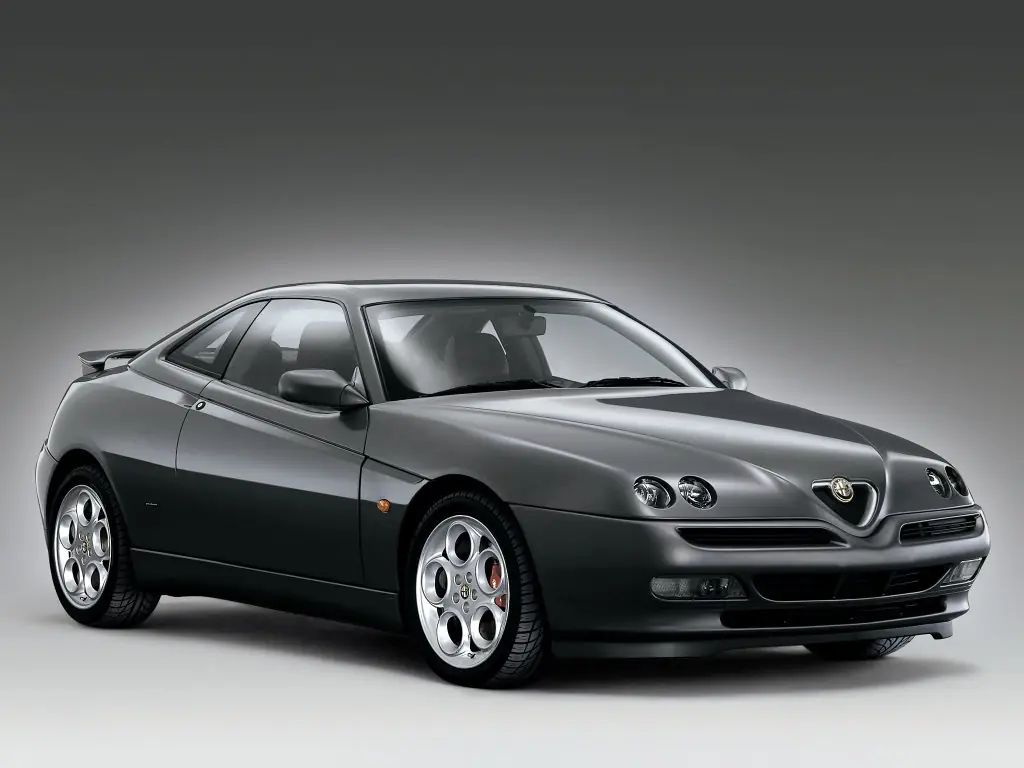The late 1990s marked a pivotal era for European sports cars, with manufacturers pushing boundaries between performance and daily usability. Among these endeavors, the Alfa Romeo GTV (916) emerged as a compelling proposition, blending Italian flair with grand touring capabilities.
From its 1998 facelift until production ended in 2003, the GTV carved out a unique position in the market. While German rivals focused on precision engineering, this Italian beauty offered something different – a cocktail of emotion and performance that only Alfa Romeo could concoct.
Italian Artistry Meets Purpose
The GTV’s shape tells a story of collaboration between Alfa Romeo and Pininfarina, resulting in a design that refuses to fade into obscurity. Those distinctive lines flow from the characteristic triangular grille to the dramatically tapered rear, creating a silhouette that turns heads even today.
Every panel serves a purpose, yet none sacrifices style. The low-slung nose, muscular haunches, and that subtle rear spoiler work in harmony – a testament to Italian design mastery that transcends trends.
“After owning mine for six years, I still catch myself staring back at it every time I park. The way light plays across those curves… it’s automotive art.” – Michael Bennett, GTV owner since 2017
The facelift brought subtle but meaningful updates, refining the original concept without diluting its character. These changes included revised headlights and a more pronounced grille, enhancing the car’s road presence while maintaining its elegant proportions.
Heart of a Lion
Under that sculpted hood lies a choice of engines that perfectly match the car’s character. Let’s examine what powers this Italian stallion:
- two-liter Twin Spark: delivers 144 hp of naturally aspirated punch;
- three-liter V6: produces 220 hp of pure Italian symphony;
- impressive torque across the range – even the base engine pulls strongly;
- mechanical reliability exceeds typical Italian stereotypes;
- characteristic Alfa Romeo exhaust note that enthusiasts cherish.
These powerplants pair exclusively with manual transmissions, making every drive an engaging experience. The gear lever falls naturally to hand, with a mechanical precision that rewards proper technique.
Engineering Excellence
The GTV’s chassis demonstrates Alfa Romeo’s commitment to driving dynamics. The front-wheel-drive layout might raise eyebrows among purists, but the execution proves doubters wrong. Multi-link rear suspension and precise steering geometry create a balanced, responsive package.
“The handling is telepathic. You think about turning, and the car responds. It’s more capable than most drivers expect.” – James Cooper, Classic Car Magazine contributor
Weight distribution and suspension tuning work in harmony, delivering a ride that’s firm but never harsh. The brakes inspire confidence, with good pedal feel and progressive response.
This chassis setup allows drivers to explore the car’s limits safely, making it an excellent choice for both spirited weekend drives and track day adventures.
Daily Life With an Italian Beauty
Living with a GTV requires commitment but rewards dedication. The interior wraps around occupants like a well-fitted Italian suit, though rear seats better serve as additional luggage space than passenger accommodation.
Here’s what potential owners should consider:
- timing belt replacement every 70,000 kilometers;
- electronics require attention and regular maintenance;
- parts availability varies but specialist networks exist;
- fuel economy remains reasonable for a sports car;
- strong enthusiast community provides valuable support.
The boot offers surprising practicality for weekend getaways, while the front seats provide excellent support during long journeys. Climate control and decent sound insulation make the GTV a capable grand tourer.
A Future Classic Today
The GTV stands at a fascinating crossroads in the collector car market. Values have stabilized, making now an intriguing time to consider ownership. This stability suggests growing recognition of the model’s significance in Alfa Romeo’s heritage.
Not just a sports car, the GTV represents the end of an era – one of the last pure, analog driving machines from a storied Italian marque. Its combination of style, performance, and character grows more appealing as modern cars become increasingly digitized.
Pros and Cons
| Advantages | Disadvantages |
|---|---|
| Timeless Pininfarina design that ages gracefully | Limited rear seat practicality |
| Engaging driving experience with excellent feedback | Parts can be expensive and sometimes hard to find |
| Strong performance from both engine options | Some electrical issues common with age |
| Growing appreciation in the classic car market | Requires committed maintenance schedule |
| Excellent steering feel and handling balance | Rust protection needs regular inspection |
| Distinctive character lacking in modern vehicles | Service history crucial for used examples |
| Strong enthusiast community support | Interior materials show wear over time |
The Alfa Romeo GTV (916) represents a sweet spot in the modern classic market – old enough to deliver pure driving thrills, yet young enough to serve as a usable weekend car. While it demands attention and care, few vehicles offer such a compelling blend of style, performance, and potential appreciation.

